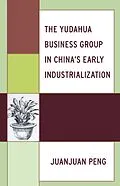By tracing the history of Yudahua from the late nineteenth century to the middle of the twentieth century, this study analyzes a successful inland business model among textile companies in modern China. The steady growth of this enterprise relied primarily on its strategy to focus on low-end markets and to locate new mills in underdeveloped interior regions. This strategy further allowed the enterprise to pioneer industrialization in its host localities, demonstrating a major social and economic impact on the local societies. At the same time, Yudahua's unique team leadership pattern-five leading families shared its ownership and management-made the business an atypical family firm and allowed relatively easy institutional departure from Chinese social networks and adoption of Western corporate hierarchy. Therefore, by the late 1940s, Yudahua had gradually developed into a fairly integrated business group with a unified management structure and routinized connections between its member mills, which differed noticeably from the loose alliances normally found in other early twentieth-century Chinese business conglomerates.
Autorentext
Juanjuan Peng is associate professor of history at Georgia Southern University.
Inhalt
Chapter 1: From the Hubei Textile Bureau to the Chuxing Company: The Self-Strengthening Legacy of China's Early Industrialization
Chapter 2: Managers and Technocrats: The Top Management Team
Chapter 3: Daxing and Yuhua: One Business in Two Localities, 1921-1931
Chapter 4: Yudahua: The Rise of a Business Group during the 1930s and 1940s
Chapter 5: From the Japanese Occupation to the Communist Liberation: The Transformation in the Late 1940s and Early 1950s
Chapter 6: Revisit the Wartime Legacy: Workers' Welfare before and after 1949
